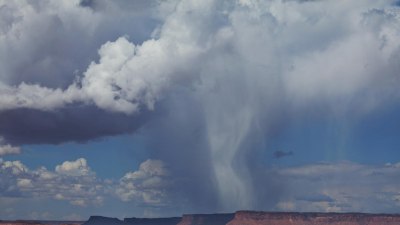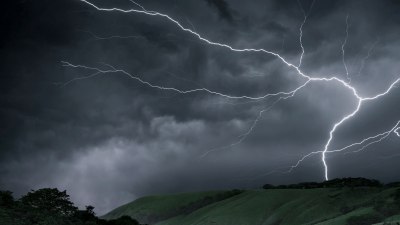How Weather Forecasts Work and Why They Still Get It Wrong
Explore the intricacies of weather forecasting and the factors that lead to inaccuracies.

Image by black-salmon on Freepik
Weather forecasting is a complex science that blends the natural elements of the atmosphere with technology and mathematics. At its core, weather forecasting relies on understanding atmospheric conditions and how they change over time. Despite significant advancements in technology and data collection, forecasts can still be inaccurate, leading people to wonder about the reliability of the predictions they receive.
To grasp how weather forecasts work, it's crucial to first understand the fundamental components involved in weather prediction. Meteorologists analyze data from a variety of sources, including weather satellites, radar systems, and ground-based observations. This information is synthesized using sophisticated computer models that simulate atmospheric conditions.
The Science Behind Weather Forecasting
The process of weather forecasting starts with data collection. Meteorologists gather information related to temperature, humidity, wind speed, and atmospheric pressure from dozens of sources. Weather satellites orbiting the Earth provide a bird's eye view of cloud patterns and systems, while radar systems track precipitation and storm systems in real time.
This data is then fed into numerical weather prediction (NWP) models. These models use mathematical equations to represent the physics of the atmosphere and simulate how these conditions will evolve over time. There are various types of NWP models, ranging from global models that cover large areas of the Earth to regional models that focus on smaller regions. These models require vast amounts of computational power and advanced mathematical techniques to produce forecasts that are as accurate as possible.
The Role of Computer Models
Computer models are the backbone of modern weather forecasting. They analyze the data collected from multiple sources and calculate predictions based on the current state of the atmosphere. Each weather model may differ in its approach and algorithms, leading to a variety of forecasts for the same time period. Meteorologists often compare outputs from several models to identify consensus and assess reliability.
One of the challenges meteorologists face is the chaotic nature of the atmosphere. The atmosphere is a dynamic system where small changes can lead to vastly different outcomes. This is known as the “butterfly effect.” In practical terms, this means that even if the initial data is accurate, small discrepancies in measurement or modeling can lead to significant variances in the forecast.
The Limits of Prediction
Weather forecasts have improved significantly over the past few decades. However, limitations still exist. Short-term forecasts (up to 48 hours in advance) tend to be more reliable compared to long-term forecasts, which can extend up to two weeks or more. The accuracy declines with time because of the inherent unpredictability of the atmosphere. Most forecasts provide a high level of confidence for the first one to three days, while predictions for a week or more often carry a higher margin of error.
Additionally, certain weather phenomena, such as thunderstorms and tornadoes, can be particularly difficult to predict accurately due to their localized and transient nature. These events can develop quickly and may not be well captured by the models until they are imminent. This unpredictability is also compounded by the fact that the conditions that cause certain weather events may not be perfectly understood, leading to forecasting challenges.
The Human Element
While technology plays a significant role in weather forecasting, human judgment remains important. Meteorologists interpret model data, taking into account local knowledge, historical data, and meteorological experience. This expertise can help contextualize model outputs and improve the quality of the forecast. Furthermore, communication is a key aspect of forecasting; meteorologists need to convey complex information in a way that is understandable to the public.
Weather agencies also rely on feedback from the public and various stakeholders to refine their forecasts. For example, emergency services may provide input based on specific conditions they observe on the ground, further enhancing the accuracy of forecasts for severe weather events.
The Influence of Climate Change
Climate change is another factor that complicates weather forecasting. As global temperatures rise, weather patterns are becoming less predictable. For instance, warmer temperatures can lead to increased evaporation, which in turn can result in more intense rain events or droughts. These shifts in weather patterns produce new dynamics that models may not fully capture, leading to greater uncertainty in forecasts.
Moreover, climate change can exacerbate extreme weather events, making them more frequent or severe. As such, understanding the relationships between climate and weather becomes increasingly important for accurate forecasting. Meteorologists are working to adapt their models to account for these changes, though it is a challenging and ongoing effort.
The Importance of Accurate Weather Forecasts
Accurate weather forecasting is essential for various sectors of society, including agriculture, transportation, and emergency management. Farmers depend on reliable forecasts to make informed decisions about planting and harvesting. Airlines utilize weather predictions to ensure safety and optimize flight routes. Emergency responders rely on accurate forecasts to prepare for severe weather events, minimizing risks to life and property.
Inaccurate forecasts can lead to significant consequences. For example, a missing warning for a severe thunderstorm could result in properties being damaged or lives being lost. Conversely, false alarms can cause public panic or unnecessary disruption, leading to questions regarding the credibility of forecasting agencies.
The Future of Weather Forecasting
The field of meteorology is constantly evolving with advancements in technology and data science. Machine learning and artificial intelligence are increasingly being integrated into forecasting techniques to improve accuracy and efficiency. These technologies have the potential to analyze vast datasets far more rapidly than traditional methods, leading to better forecasts.
Additionally, researchers are exploring the use of new observational technologies, such as drones and improved satellite systems, to collect data from previously inaccessible areas. Enhanced data collection will ultimately help meteorologists understand weather phenomena and improve forecasting models.
Public engagement is crucial as well. Educational initiatives aimed at improving the public's understanding of weather forecasts and the science behind them can enhance preparedness and foster trust in meteorological institutions. As society continues to grapple with the impacts of climate change and extreme weather, the importance of accurate weather forecasting will only increase.
In conclusion, weather forecasting is a fascinating blend of science, technology, and human expertise. While no forecasting model can guarantee absolute accuracy due to the inherent uncertainty of the atmosphere, advancements in data collection and computational techniques continue to improve predictions. It is essential for the public to understand the complexities involved in weather forecasting and recognize the factors that can lead to errors. As meteorologists continue to adapt to a changing climate and develop more sophisticated tools, the reliability of weather forecasts will become increasingly robust.











